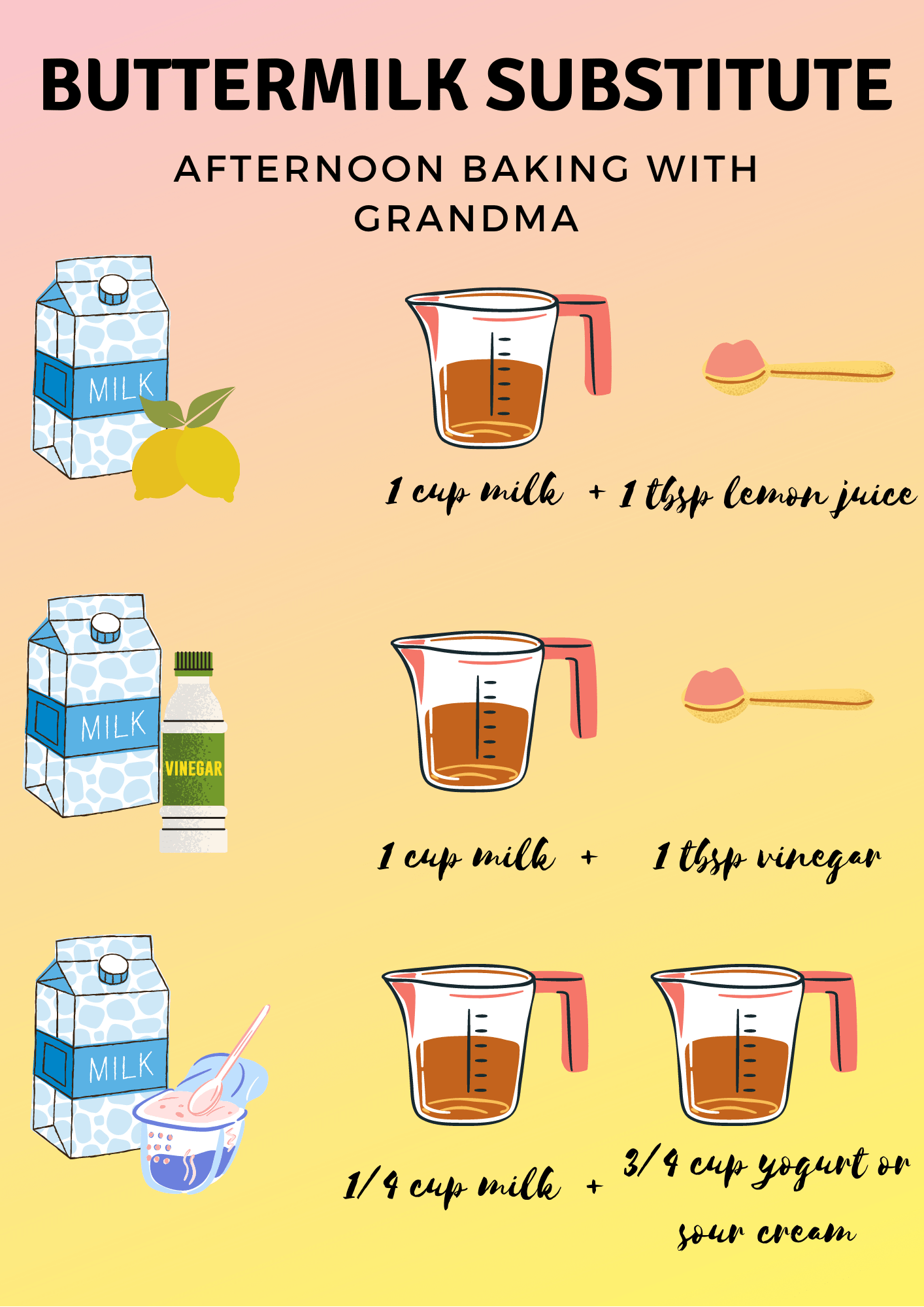Are you in the middle of baking a delicious recipe only to realize you’re out of buttermilk? Don’t worry, you’re not alone! Many home cooks find themselves in this predicament. Fortunately, there are several excellent substitutes for buttermilk that you can easily whip up with ingredients you probably already have in your kitchen.
Key Takeaways
- Buttermilk is a key ingredient in many recipes, providing moisture and a tangy flavor.
- There are several easy substitutes for buttermilk, including milk with lemon juice or vinegar, yogurt, and more.
- Each substitute has its own unique properties, so choose based on the recipe and your dietary needs.
What is Buttermilk?
Before diving into the substitutes, it’s essential to understand what buttermilk is. Traditionally, buttermilk was the liquid left behind after churning butter from cream. However, the buttermilk you find in stores today is usually cultured buttermilk, which is made by adding lactic acid bacteria to milk. This gives it a slightly thick consistency and a tangy flavor.

Why Do Recipes Use Buttermilk?
Buttermilk is a popular ingredient in many recipes, particularly in baking, due to its acidic nature. The acidity helps activate baking soda, leading to a light and fluffy texture in baked goods. Additionally, buttermilk adds a unique tangy flavor that enhances the taste of pancakes, muffins, biscuits, and more.
Top Substitutes for Buttermilk
When you find yourself without buttermilk, don’t fret. Here are some of the best substitutes you can use:
1. Milk and Lemon Juice
This is one of the most common substitutes for buttermilk. Simply mix 1 cup of milk with 1 tablespoon of lemon juice. Let it sit for about 10 minutes until it thickens slightly. This mixture mimics the acidity and texture of buttermilk effectively.

2. Milk and Vinegar

Similar to the lemon juice method, you can use vinegar to sour the milk. Combine 1 cup of milk with 1 tablespoon of white vinegar. Allow it to sit for 10 minutes before using it in your recipe. This substitute works well in most baking recipes.
3. Yogurt
Plain yogurt is another excellent substitute for buttermilk. Mix equal parts of yogurt and water to achieve a consistency similar to buttermilk. This option is perfect for adding moisture and tanginess to your baked goods.
4. Sour Cream
Sour cream can also be used as a substitute, particularly in recipes where a thicker consistency is acceptable. Thin it out with a bit of water or milk to reach the desired consistency.
5. Kefir
Kefir is a fermented milk drink that has a similar tangy taste to buttermilk. Use it in equal amounts as a direct substitute for buttermilk in any recipe. It not only matches the flavor but also adds probiotics to your dish.
Choosing the Right Substitute
While all these substitutes can replace buttermilk, the best choice depends on the specific recipe and your dietary preferences. For instance, if you’re making a recipe that requires a liquid consistency, milk with lemon juice or vinegar might be the best option. On the other hand, if you need a thicker consistency, yogurt or sour cream could be more suitable.
Additional Tips for Using Buttermilk Substitutes

- Adjust for Flavor: Each substitute has a slightly different flavor profile. Taste the mixture before adding it to your recipe to ensure it meets your flavor expectations.
- Consider Consistency: Make sure the substitute matches the consistency required in your recipe. You may need to add a bit of water or milk to thin out thicker substitutes like yogurt or sour cream.
- Experiment with Proportions: Depending on the brand or type of substitute you use, you might need to adjust the proportions slightly. Don’t be afraid to experiment to get the perfect texture and taste.

Running out of buttermilk doesn’t have to derail your culinary plans. With these simple substitutes, you can continue creating delicious dishes without compromising on flavor or texture. Whether you choose milk with lemon juice, yogurt, or another alternative, you’ll find that these substitutes can seamlessly integrate into your recipes, ensuring your baked goods remain as delightful as ever.
Remember, the key to successful substitution is understanding the role of buttermilk in your recipe and choosing an alternative that replicates its properties. With a little creativity and flexibility, you can adapt any recipe to suit your pantry and dietary needs.